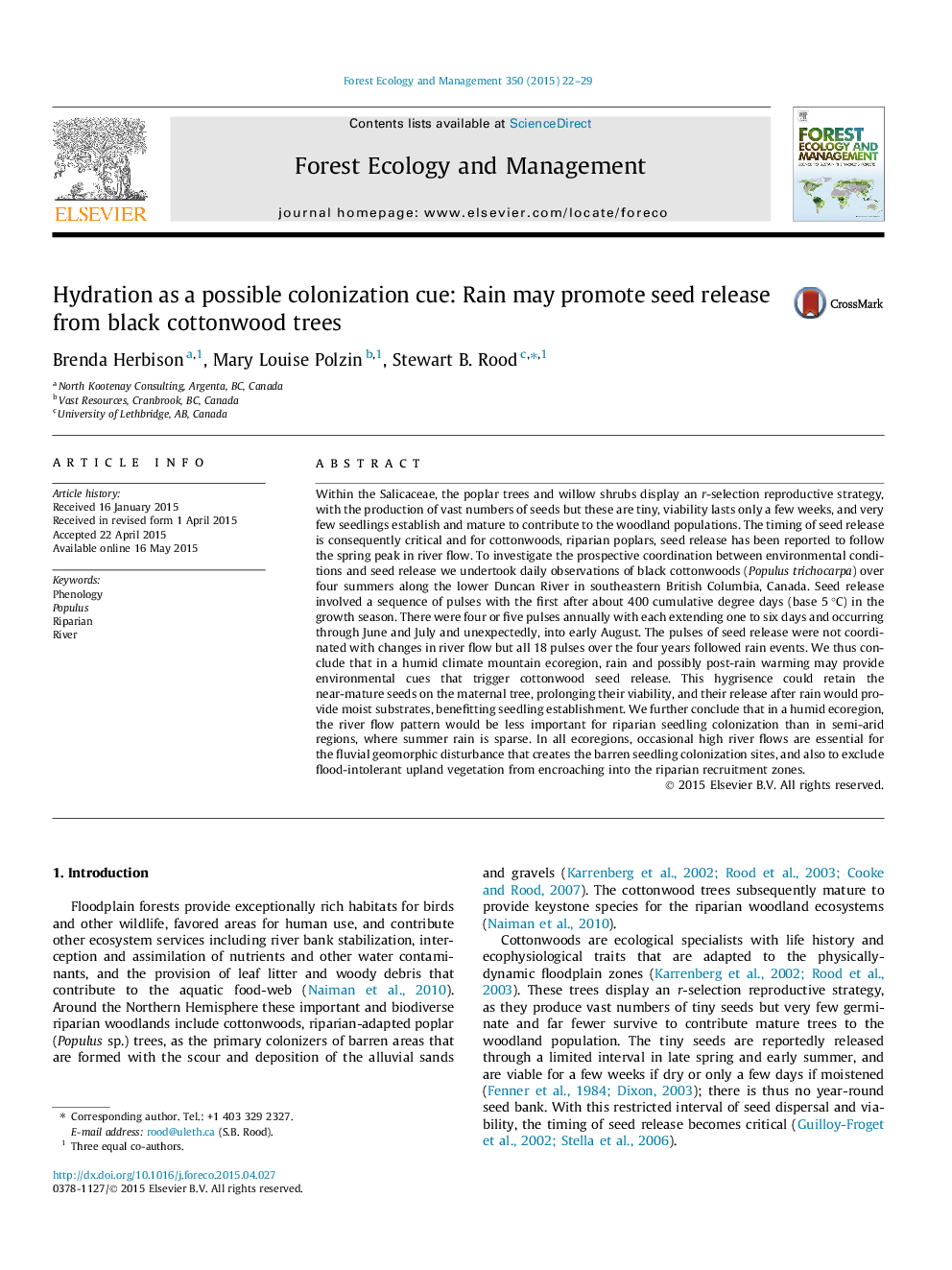| کد مقاله | کد نشریه | سال انتشار | مقاله انگلیسی | نسخه تمام متن |
|---|---|---|---|---|
| 86169 | 159169 | 2015 | 8 صفحه PDF | دانلود رایگان |
• We investigated cottonwood seed release with daily observations over four summers.
• Annual seed release involved four or five pulses with each following rain and often warming.
• Rain rather than river flow apparently provided a hydration cue for seed dispersal and colonization.
• The environmental cues for cottonwood colonization might vary across ecoregions due to different rain and flow patterns.
Within the Salicaceae, the poplar trees and willow shrubs display an r-selection reproductive strategy, with the production of vast numbers of seeds but these are tiny, viability lasts only a few weeks, and very few seedlings establish and mature to contribute to the woodland populations. The timing of seed release is consequently critical and for cottonwoods, riparian poplars, seed release has been reported to follow the spring peak in river flow. To investigate the prospective coordination between environmental conditions and seed release we undertook daily observations of black cottonwoods (Populus trichocarpa) over four summers along the lower Duncan River in southeastern British Columbia, Canada. Seed release involved a sequence of pulses with the first after about 400 cumulative degree days (base 5 °C) in the growth season. There were four or five pulses annually with each extending one to six days and occurring through June and July and unexpectedly, into early August. The pulses of seed release were not coordinated with changes in river flow but all 18 pulses over the four years followed rain events. We thus conclude that in a humid climate mountain ecoregion, rain and possibly post-rain warming may provide environmental cues that trigger cottonwood seed release. This hygrisence could retain the near-mature seeds on the maternal tree, prolonging their viability, and their release after rain would provide moist substrates, benefitting seedling establishment. We further conclude that in a humid ecoregion, the river flow pattern would be less important for riparian seedling colonization than in semi-arid regions, where summer rain is sparse. In all ecoregions, occasional high river flows are essential for the fluvial geomorphic disturbance that creates the barren seedling colonization sites, and also to exclude flood-intolerant upland vegetation from encroaching into the riparian recruitment zones.
Figure optionsDownload as PowerPoint slide
Journal: Forest Ecology and Management - Volume 350, 15 August 2015, Pages 22–29
